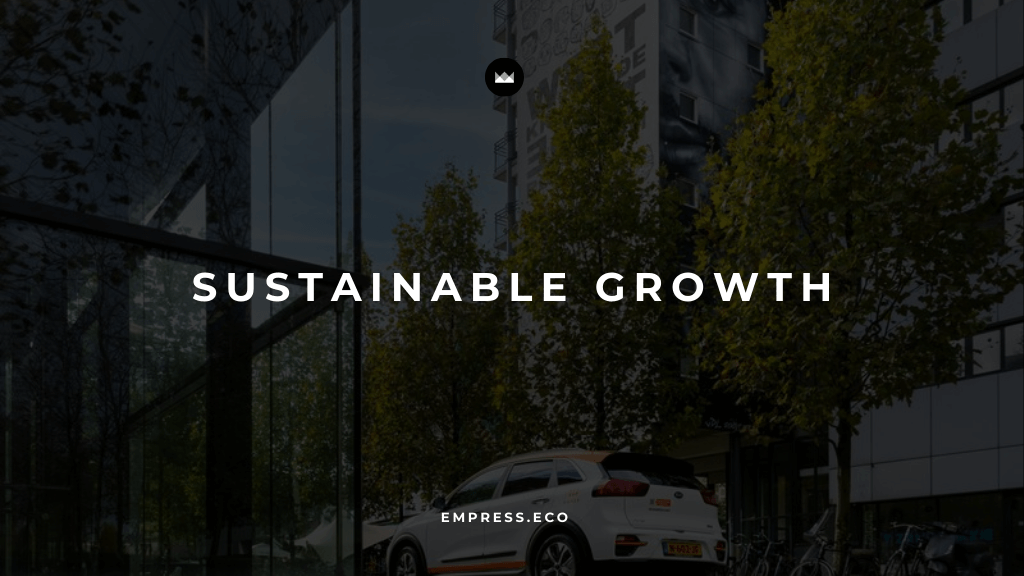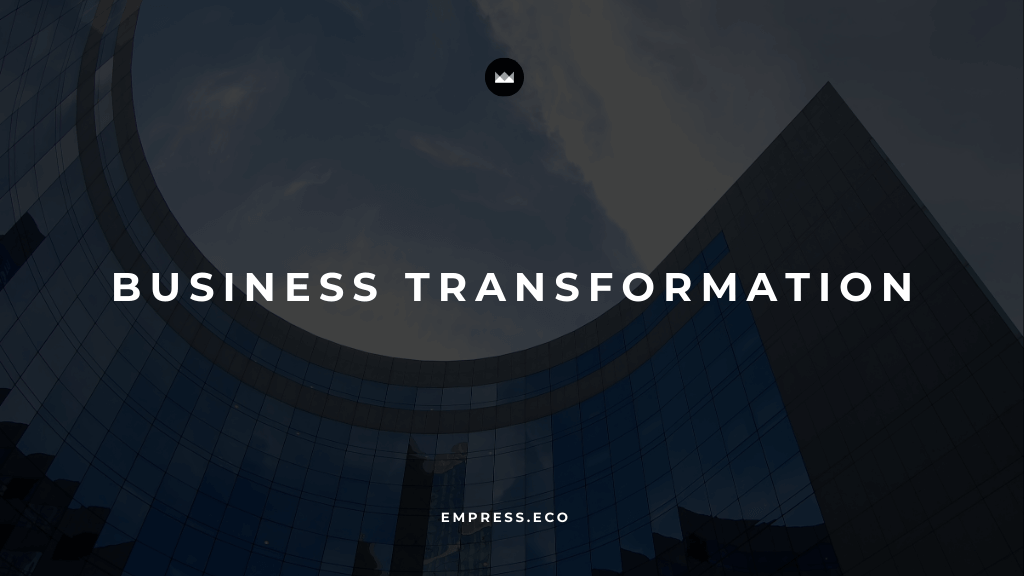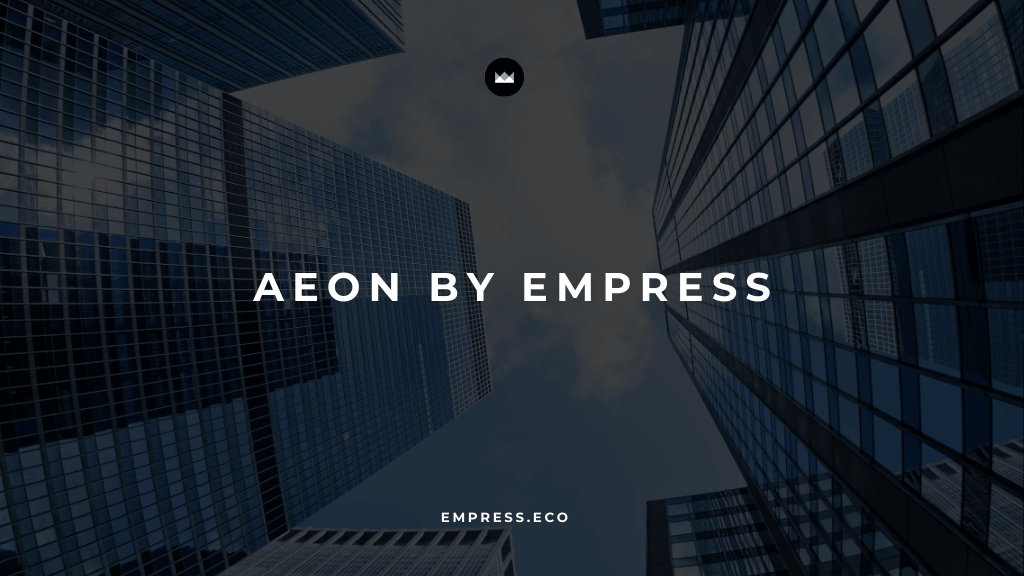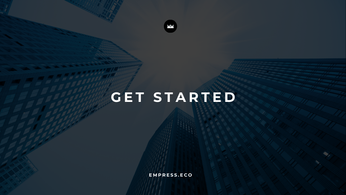
Achieve Sustainable Business Growth with Aria’s Green Tactics
Explore how green strategies boost business growth sustainably.
Table of Contents
In the 21st century, businesses face the critical challenge of balancing profit and planet. With increasing environmental consciousness and the undeniable impacts of climate change, corporations are expected to be more responsible, sustainable, and green in their operations. This balance is significant for maintaining a competitive edge, addressing ethical considerations, and ensuring long-term viability. By focusing on sustainability, businesses can realize cost savings through efficient resource use and waste reduction, while also meeting the growing consumer demand for environmentally friendly products.
A 'green' business operates in ways that solve, rather than cause, both environmental and social challenges. These companies aim for a positive impact on the environment, community, and economy, adhering to the 'triple bottom line.' Sustainability, the circular economy, and corporate social responsibility (CSR) are key concepts defining green business practices. As these practices evolve, businesses are adopting trends such as renewable energy, sustainable supply chains, eco-friendly packaging, and carbon offsetting to minimize their ecological impact and appeal to eco-conscious consumers.
Key Takeaways
- Balancing ecological responsibility with profit is critical for businesses in today's market.
- Green business practices involve sustainability, resource efficiency, and positive social impact.
- Adopting sustainable trends like renewable energy and eco-friendly packaging can lead to cost savings and customer loyalty.
The Imperative of Eco-Conscious Business
Modern businesses are integrating eco-conscious strategies not just as a moral choice but a competitive necessity. Your understanding of this imperative can be the difference between leading the market and lagging behind.
Profit and Planet Synergy
You must view environmental responsibility and profitability as intertwined, not separate, goals. Resource efficiency often correlates with cost reduction, and sustainable practices can lead to new market opportunities. Recognizing this synergy is essential:
- Cost Savings: Implement energy-efficient technologies and reduce waste to lower operating costs.
- Revenue Growth: Offer sustainable products or services to meet the growing consumer demand.
Consumer Demand Shifts
Your customers are increasingly environmentally aware and base their purchasing decisions on a company's ecological footprint. Tailor your business to these shifts:
- Transparency: 74% of consumers are willing to pay more for transparent brands; therefore, clearly communicate your sustainability efforts.
- Loyalty: Companies with strong sustainability records have 29% higher likelihood of retaining customers, so highlight your green initiatives to build trust and repeat business.
Principles of Sustainable Business
Sustainable business principles are the foundation for building a company that not only thrives financially but also contributes positively to the environment and society. By integrating these core ideologies, you pave the way for long-term success and responsibility.
Understanding Sustainability
Sustainability is your guiding star for long-term viability. It's about using resources in a way that does not deplete them for future generations. Optimize your resource efficiency and focus on minimizing environmental impact—from energy consumption to waste production.
Adopting a Circular Economy
Embrace the circular economy to fundamentally redesign your business operations. This means considering the lifecycle of products and prioritizing activities like repairing, reusing, and recycling materials. Effective application can transform waste into a resource, creating a loop that benefits both your business and the planet.
Commitment to CSR
Commit to Corporate Social Responsibility (CSR) by addressing environmental and social issues through your business practices. This could involve supporting environmental initiatives or ensuring fair labor practices in your supply chain. Through CSR, you don't just comply with standards; you set them, building trust and value in your brand.
Trends in Environmental Responsibility
Environmental responsibility is pivotal for modern businesses, influencing their growth and consumer relationships. The following trends showcase the evolving nature of corporate commitment to the planet's well-being.
Rise of Renewable Energy
Your business can tap into the growing reliance on renewable energy. Solar and wind installations are not just environmentally conscious choices but also increasingly cost-effective.
Sustainable Supply Chain Initiatives
By adopting sustainable supply chain initiatives, you're ensuring that environmental stewardship permeates every level of your operation, from raw material sourcing to product delivery.
Innovations in Eco-Friendly Packaging
Explore innovative packaging options like biodegradable materials and recyclable products. These not only minimize your ecological footprint but also resonate with eco-aware customers.
Strategies for Carbon Offsetting
Implementing carbon offsetting strategies is essential. Investments in reforestation or clean energy projects can counterbalance your company's emissions, contributing to a healthier planet.
Strategies for Green Transformation
To facilitate a green transformation in your business, focus on optimizing energy efficiency, implementing waste reduction techniques, and engaging in ecosystem conservation efforts.
Optimizing Energy Efficiency
You can significantly reduce energy consumption by retrofitting existing facilities with LED lighting and energy-efficient appliances. Regularly perform energy audits to identify and address inefficiencies. Install smart thermostats to automatically adjust temperatures and lower energy use when buildings are unoccupied.
- LED Retrofitting: Replace outdated lighting with LED fixtures to cut down energy usage and costs.
- Energy Audits: Conduct these audits bi-annually to pinpoint energy wastage.
- Smart Thermostats: Use programmable settings for optimal energy use throughout the day.
Waste Reduction Techniques
Your business should adopt a robust recycling program and consider composting organic waste. Encourage a paperless environment to minimize office waste, and invest in technology that enables virtual collaboration to reduce the need for physical resources.
- Recycling Program: Start a comprehensive recycling initiative for all recyclable materials.
- Paperless Environment: Transition to digital documentation and communications.
- Composting: Implement composting for suitable organic waste to reduce landfill contributions.
Ecosystem Conservation Efforts
Protect biodiversity by sourcing raw materials responsibly and incorporating green spaces into your business premises. Partner with local conservation projects to offset your ecological footprint and integrate native plant species to support local wildlife.
- Responsible Sourcing: Ensure your raw materials are obtained in an environmentally sustainable manner.
- Green Spaces: Enhance your business environment with plantings that also promote biodiversity.
- Local Partnerships: Support and partner with local conservation efforts to bolster your company's green image.
Case Studies on Green Practices
Exploring specific examples of companies employing green strategies gives you actionable insights on how you can improve your own business practices using sustainable methods.
Renewable Energy Successes
Your transition to renewable energy can lead to significant cost savings and a reduced carbon footprint. IKEA, a leader in the global retail space, has invested in enough wind and solar power to cover 100% of its energy needs by 2020. The company utilizes over 750,000 solar panels on its stores and warehouses, coupled with ownership and investment in several wind farms, demonstrating the profitability of substantial renewable energy investments.
In the tech sector, Google has matched 100% of its energy consumption with renewable energy since 2017. Key factors in this success are long-term Power Purchase Agreements (PPAs) and strategic investment in sizeable renewable projects, highlighting that sizeable and long-term investments can be especially effective.
Circular Solutions in Action
Circular economy principles can revolutionize your product lifecycle and waste management practices. Patagonia has set an example by taking responsibility for the entire lifecycle of its products. Its Worn Wear program encourages customers to trade-in used items for store credit, effectively creating a circular system where clothing is repaired, reused, and recycled.
Interface, a modular flooring company, adopted a circular business model through its Mission Zero plan aiming to eliminate any negative impact by 2020. It includes the use of recycled materials in their product lines and old carpet take-back programs. Their success serves as a blueprint for how you can close the loop in product manufacturing and operations.
Guidelines for Measuring Sustainability
Effective sustainability measurement is crucial for understanding and improving your business's environmental impact. Having a clear set of guidelines ensures accuracy and comparability of sustainability data.
Metrics for Eco-Friendly Operations
- Energy Consumption: Track the amount of energy used in kilowatt-hours (kWh). Include both renewable and non-renewable sources to gauge overall energy efficiency.
- Water Usage: Measure the volume of water used in cubic meters. Consider implementing water-saving processes and recycling water where possible.
- Waste Production: Quantify waste generation by weight or volume and categorize by type—recyclable, compostable, and landfill. Strive to minimize waste and enhance your recycling efforts.
- Emission Levels: Monitor your carbon footprint by calculating greenhouse gas (GHG) emissions in terms of carbon dioxide equivalents (CO2e). Target areas for emission reduction.
Reporting and Transparency
- Sustainability Reports: Regularly publish detailed sustainability reports. These should follow recognized frameworks such as the Global Reporting Initiative (GRI) for consistency and reliability.
- Third-Party Audits: Encourage external audits of your sustainability metrics. This builds credibility and can help identify areas for improvement.
- Stakeholder Engagement: Communicate your progress and challenges with stakeholders. Clear dialogue can provide valuable feedback and enhance trust in your brand.
Challenges and Solutions in Eco-Business
Transitioning to an eco-business model presents distinct challenges. Understanding and overcoming these barriers are key for businesses aiming to operate sustainably.
Barrier Identification
Resource Availability: Locating enough renewable resources and technologies can be a hurdle. You may struggle to find suppliers that meet your sustainability criteria.
- Cost Concerns: Initial investments for green technologies often come with a high price tag. Your financial plan must accommodate these costs without compromising operational efficiency.
Regulatory Compliance: Keeping up with the changing environmental regulations requires constant vigilance. Your business must stay informed to ensure all operations are compliant.
- Market Dynamics: Transitioning to a green business model can affect market position. You need to predict how your consumer base and competitors will react to these changes.
Overcoming Obstacles
Strategic Resource Planning: Build a network of sustainable suppliers and use resource mapping to secure a steady supply. Consider alternative materials that are both eco-friendly and cost-effective.
- Investment in Innovation: Allocate budget for R&D in sustainable technology. Over time, this can reduce costs and improve operational efficiency.
Education and Training: Invest in training your workforce to be knowledgeable about green practices. This ensures smooth adaptation to new processes and regulations.
- Adaptability in Marketing: Craft your marketing approach to highlight the environmental benefits of your products or services. Educate your customers on the value of sustainability to create a loyal consumer base.
Future Outlook in Eco-Business
In the realm of eco-business, your future strategies will likely revolve around technology and innovation. You'll witness a growing emphasis on digitalization and data analysis to optimize resource usage and reduce waste.
Decarbonization will be central to your operations. Look for advances in carbon capture, utilization, and storage (CCUS) technologies. They will not only mitigate the impact of your carbon footprint but also potentially create new revenue streams.
As you peer down the road, green financing will become more accessible. Financial products such as green bonds and sustainability-linked loans will support your sustainable projects, incentivizing shifts in your business practices.
Expect regulatory landscapes to update with stringent environmental, social, and governance (ESG) standards. Your compliance with ESG criteria will not just be about risk management, but a determinant of your competitive edge.
Sustainability FactorFuture TrendEnergyTransition to renewablesWaste ReductionCircular economy practicesPolicyStricter ESG regulationsInvestmentGrowth in green finance
Your adaptability and agility in adopting these trends will shape your success, as customer preferences favor environmentally conscious businesses. Engage in collaboration and partnerships for sustainability projects which can lead to shared expertise and innovative solutions, ultimately benefiting your bottom line along with the planet.
Frequently Asked Questions
In this section, you'll find targeted answers to common inquiries regarding how businesses can align their profitability with environmental stewardship.
How can businesses effectively reduce their environmental footprint while maintaining profitability?
To minimize environmental impact while staying profitable, you can focus on energy efficiency, use sustainable materials, and implement recycling programs. These actions not only help the planet but also reduce costs by lowering waste and energy expenditure.
In what ways can investment in renewable energy sources drive both sustainability and long-term business success?
Investing in renewable energy can reduce your reliance on fossil fuels and lower energy costs over time. This step towards sustainability can also attract eco-conscious customers, resulting in increased market share and profitability.
What challenges do companies face when transitioning to sustainable supply chains, and how can these be overcome?
Transitioning to a sustainable supply chain can involve increased costs and logistical complexities. To mitigate these challenges, you can start by assessing the sustainability of current suppliers, establishing green procurement policies, and gradually shifting towards more sustainable partners and processes.
What role does eco-friendly packaging play in a company’s green strategy, and what are the benefits?
Eco-friendly packaging reduces your environmental impact by minimizing waste. Using recyclable and biodegradable materials can also resonate with your customers and differentiate your brand in the marketplace, potentially increasing sales.
How can businesses engage and motivate employees to participate in sustainability initiatives?
Businesses can foster a culture of sustainability by providing training and incentives for employees to participate in green initiatives. Recognizing and rewarding contributions to sustainability can increase engagement and encourage a collective effort.
Can you provide examples of how transparent reporting of sustainability efforts can enhance a company's reputation?
Transparent reporting of sustainability efforts demonstrates accountability and commitment to environmental responsibility. Publicly sharing your sustainability goals, progress, and outcomes can build trust with stakeholders, improve your brand image, and potentially lead to partnerships with like-minded organizations.
Empress Newsletter
Join the newsletter to receive the latest updates in your inbox.







